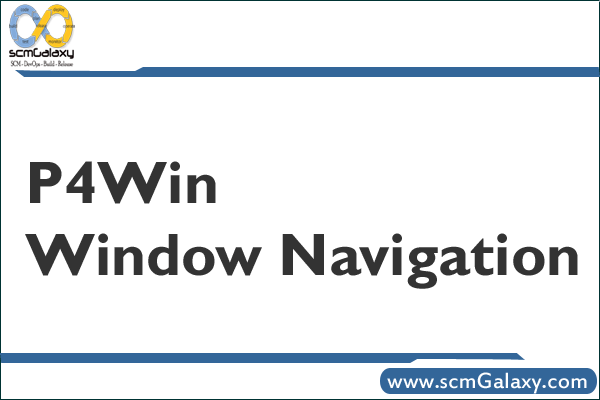

The P4Win Screen
The P4Win screen resembles the Windows Explorer. The following diagram points out the main portions of the screen. Each pane is described in detail in the following sections.
The Depot Pane
Depot contents are displayed in a tree in the left pane.
Picture DepotPane:
Some navigation hints:
• Multiple selections: Shift-click to select contiguous items, Ctrl-click to select noncontiguousitems.
• Select next/previous: Up and down arrows traverse the current level, and right and leftarrows move the cursor up and down through the folder hierarchy.
• Open a selected folder: Use the asterisk (*) key on the numeric keypad.You can control which files are displayed in the depot pane. For example, you might want to restrict the list of files to display only the files for the project you’re working on, or conversely, you might want to see every file in every depot. The scope is controlled by your client specification and the view you choose for the depot pane.
The Right PaneThe right pane displays changelists, jobs, client specifications, users, labels or branch specifications. To change the display, click the corresponding toolbar button.
The ToolbarThe P4Win toolbar contains buttons that provide shortcuts for common P4Winoperations. However, there’s a menu equivalent for every button on the toolbar. Note that buttons are gray if an operation is not available. For example, some operations require you to select a file first. If no file is selected, the button (and the corresponding menu item)are gray. Here’s what the buttons do:
The Status PaneIn the status pane at the bottom of the screen, P4Win displays the commands it sends to the Perforce server, the results of operations, and, for some P4Win operations, lists ofinformation.
P4Win FormsTo define changelists, users, workspaces, labels, jobs, and branches, you enter information into forms displayed by P4Win. For example, the following figure shows the changelistform.
- Best AI tools for Software Engineers - November 4, 2024
- Installing Jupyter: Get up and running on your computer - November 2, 2024
- An Introduction of SymOps by SymOps.com - October 30, 2024

